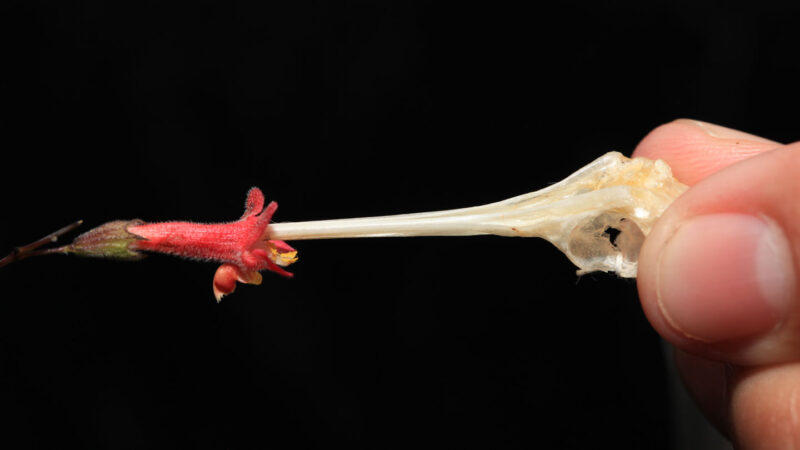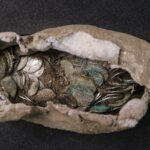Some flowers may be using their pollinators as battlegrounds. Their secret weapon: built-in pollen catapults that help them outcompete rival flowers.
In Brazil, red flowers called Hypenia macrantha have both male and female reproductive organs. To avoid mating with themselves, individual flowers go through two phases. In the male phase, the flower produces pollen. Later, in a female phase, the flower becomes ready to accept pollen.
Scientists Say: Pollen
The blooms have a clever trick to spread their pollen. When a hummingbird visits, these flowers shoot out pollen like tiny catapults. The blast knocks off the pollen that had already been on the hummingbird’s beak. Some of the catapulted pollen now sticks to the beak instead.
Scientists Say: Nectar
Hummingbirds can move pollen between flowers. Plants bribe the birds to come by with rewards of sweet nectar. The pollen is stored in a compartment covered by petals. When the hummingbird flies to the next flower, it’s more likely to carry the projectile pollen instead of pollen from a rival flower. This gives the blooms a better chance of making new seeds.
Researchers shared their new findings in a paper that will appear soon in the American Naturalist.
Experiments reveal the details
When a hummingbird visits an H. macrantha bloom in its male phase, its beak triggers a release mechanism. This flings all the pollen in a single burst. Later, the flower becomes female.
Bruce Anderson is interested in how plants and animals interact. An evolutionary ecologist, he works at Stellenbosch University in South Africa. There, he’s part of a team that designed an experiment to mimic hummingbirds visiting H. macrantha blooms. They did this by poking a hummingbird skull into the flowers.
The researchers first marked the pollen with tiny fluorescent particles. They applied this fluorescent pollen to the part of the beak where pollen tends to stick. Then they inserted the beak loaded with the fluorescent pollen into a new set of male and female flowers and tracked where the marked and unmarked pollen particles ended up.
High-speed video showed what happened when a male flower “exploded.” Its pollen shot out like missiles. This knocked off much of the pollen that had been on the beak. In fact, beaks lost twice as much pollen as when they poked into already-exploded flowers. And the more fluorescent pollen a flower knocked off, the more of its own pollen now stuck to the beak.
“It’s almost like there’s a division of labor for pollen. Some of it is meant for mating, and some of it’s meant for fighting,” says Anderson.
Anderson now wants to learn whether the pollen blasts ultimately result in more offspring — seeds — for a bloom.
Evolutionary biologist Rebecca Burch has investigated how animals compete to reproduce. She works at the State University of New York at Oswego. This study shows that plants compete in a similar way.
“Plants are not just stationary objects,” she says. “They engage in communication, competition and now active reproductive sabotage of other plants.”




